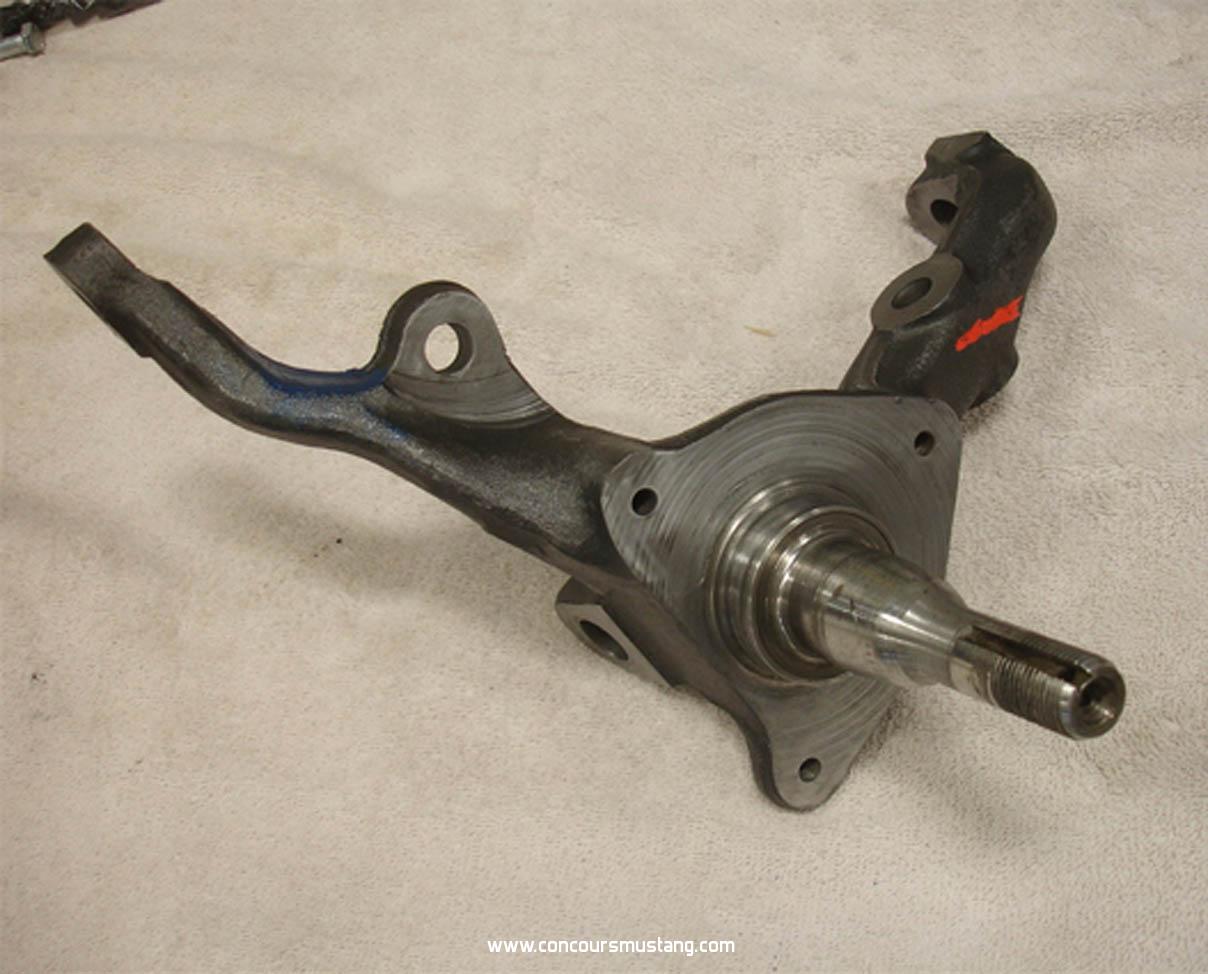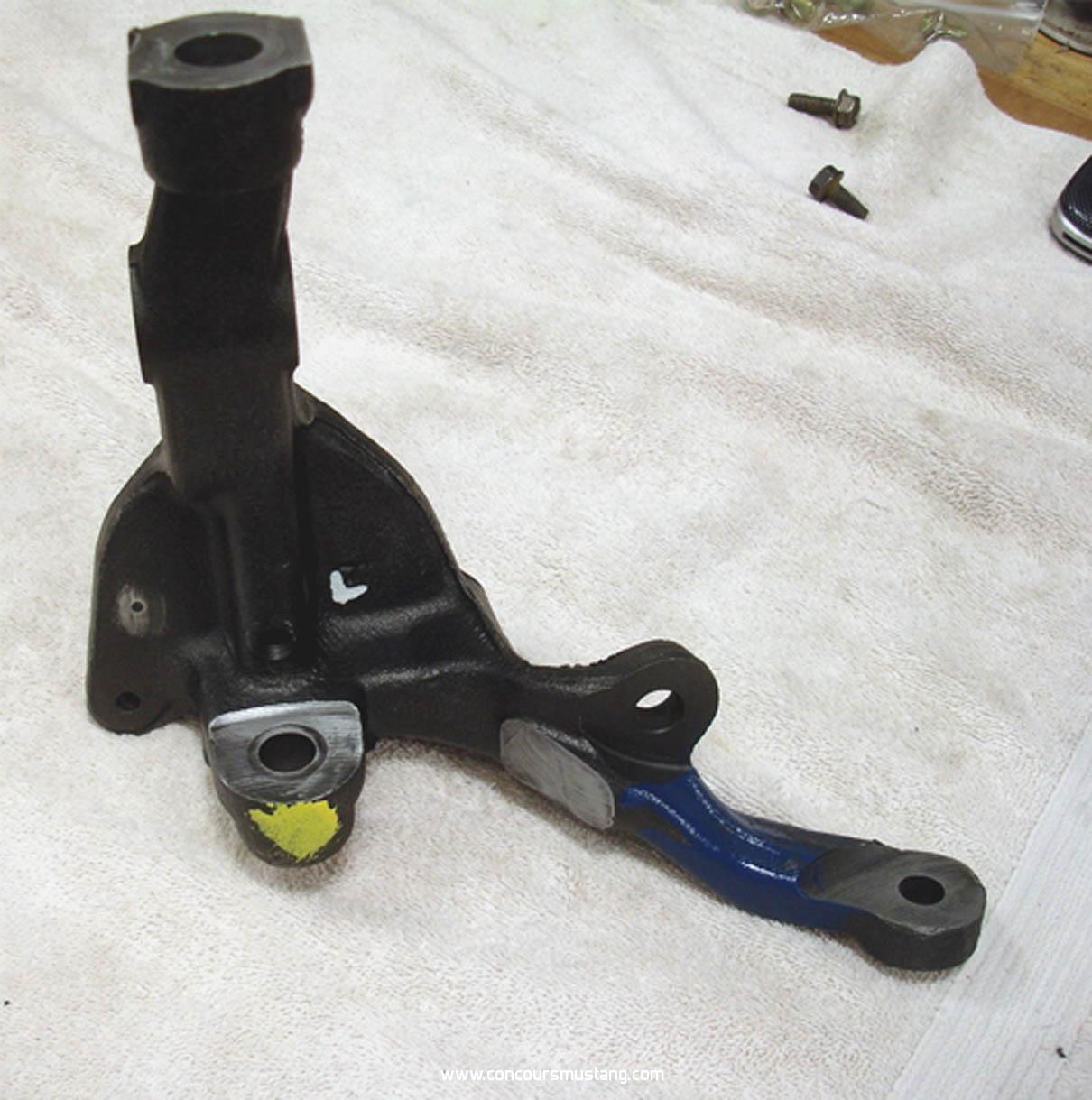Given photos are not available, could you describe in more detail what these should look like? It looks like the spindle and splash shield mounting surfaces should be machined yes? And possibly where the caliper contacts the bracket should be machined? Should the part appear to have been machined after corrosion treatment or before?
Yes any flat surface would have been machined and even some of where the two halves of the mold are often touched with a grinder to clean them up- though I believe is that they might foster cracks. So the end where the faces would meet the ball joint, face where the ball joint nuts would be, the surfaces inside the rotor, surfaces where the bearing race would sit, where the seal would run, where the shield would attach, where calipers brackets would mount, where the caliper mounts would be tightened (bolts would sit), where the tie rod would be attached and where it would be tightened - nut would rest
Not a corrosion treatment by design though it worked out that way. They were treated again after all the work was done to reduce rusting while in transport to the assembly plant or sitting on the shelf of the local parts store.
Thanks.
Are we saying the correct finish is, or is like a phosphorus and oil finish?
Not P & O originally. It was a oil quenching process and the tone of the finish and the residual coating would have been a results of how old the oil in the vat was
Some use a P&O then tumble the part before doing the machined surfaces in an effort to reproduce the original look. Others like me have been successful with gun bluing repair fluid.
Later examples NOT 67's- just shown for finish comparison. Of course using a computer and digit media is a fairly poor method for comparison
Lighting and angle have allot do do with the contrast in these two. One has not been recolored (original finish) the other recolored


Normally I find the caliper mount a lighter tone - just me - when you find a nice unrusted (surface at least) one